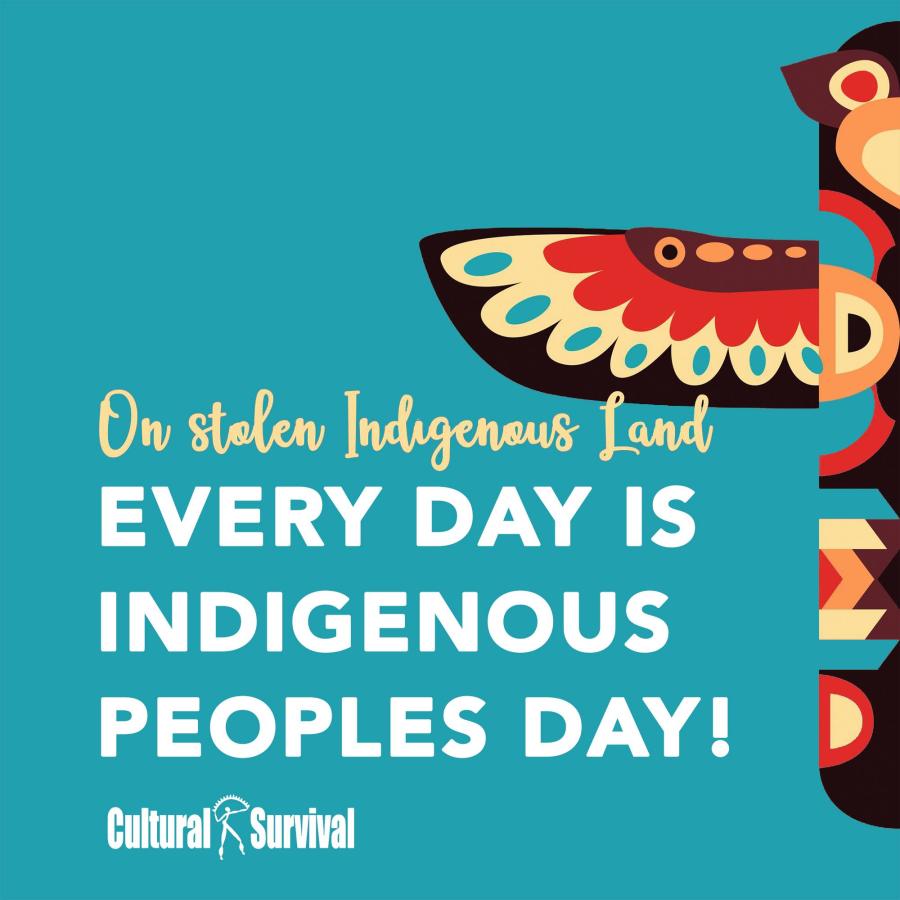This issue of Cultural Survival Quarterly focuses on one of the most critical yet little-known problems in the United States today: the rapid and catastrophic disappearance of Native American languages.
At first glance it might seem to be an inconsequential problem. You might think it doesn’t matter what language you use to communicate, as long as you’re understood. You might also think that in America and our globalizing world—in which English is the lingua franca—it would be wiser to spend resources on improving Native Americans’ English communication skills rather than resuscitating fading tongues.
But arguments like these presume something that isn’t true: that language is simply a collection of words, and that one language is interchangeable with another. This presumption seems logical to English speakers because ours is the most mongrel of languages, absorbing through empire and immigration bits and pieces of hundreds of other languages. To be sure, it gives our speech a certain je ne sais quoi. But for all its breadth, English cannot substitute for Native American languages, because these languages are based on entirely different histories, spiritual beliefs, scientific and natural-world understandings, and political and legal ideas. In essence they are based on different realities. Native languages capture concepts that do not exist in English. They define kinship relationships that are unique to their speakers. They are the sole vehicles by which indigenous peoples can speak to their ancestors or their Creator. And they express the ideas on which Native American cultures are anchored. In other words, a native language does not just reflect a culture; in a functional sense it is the culture.
That is why preventing the loss of Native American languages is so important. The loss of any one of them is just as serious as the loss of a biological species. When a language dies a piece of humanity dies with it. This is illustrated by boxes scattered throughout this issue that contain examples of words, grammatical forms, or other language elements that suggest the unique worldviews inherent in every Native American language.
There are two other ideas that we hope you will take away from this issue. The first is that Native American languages are in crisis. Many are spoken by only a handful of elderly people. Unless we take action now, these languages will be gone within five or ten years. We’ve included three articles that discuss this problem, each on a different scale. Jacob Manatowa-Bailey provides an overview of the state of Native American languages in the country as a whole, while Alice Anderton spotlights the dire nature of the problem in Oklahoma—the state with the largest concentration of tribes and languages. Richard Grounds explains the special challenges faced by very small tribes, which represent the majority of critically endangered Native American languages.
The next three articles reflect our second theme: that despite formidable challenges, Native American languages can be revitalized—with extraordinary supplemental benefits. The first piece describes how a visionary MOWA Choctaw school principal introduced a native language and culture program to a reservation school that transformed it from a neglected, bottom-of-the-heap performer with a 68 percent dropout rate, to the top school in the state. Then Darrell Kipp describes how to establish an immersion school—the only way to create fluency on a large scale—through the example of his own experience on the Blackfeet reservation. And finally a photo essay transports you to the crown jewel of language revitalization efforts: the Pünana Leo program in Hawai’i. This program started in 1983, when there were only 30 remaining Hawaiian-speaking children. Today there is a network of schools that have educated more than 2,000 new fluent speakers and revived native Hawaiian culture as a whole.
One final thing you should take away from this issue: the native language activists you will read about here are heroes of the highest order. They are fighting against enormous odds, often alone, always unsung. They work against a ticking time bomb without sufficient resources or support, knowing that the full fruits of their labor won’t be realized for a generation. Most important, they are not just fighting for the survival of their own culture; they are fighting for the heritage of human culture as a whole.
—Mark Cherrington, Editor



